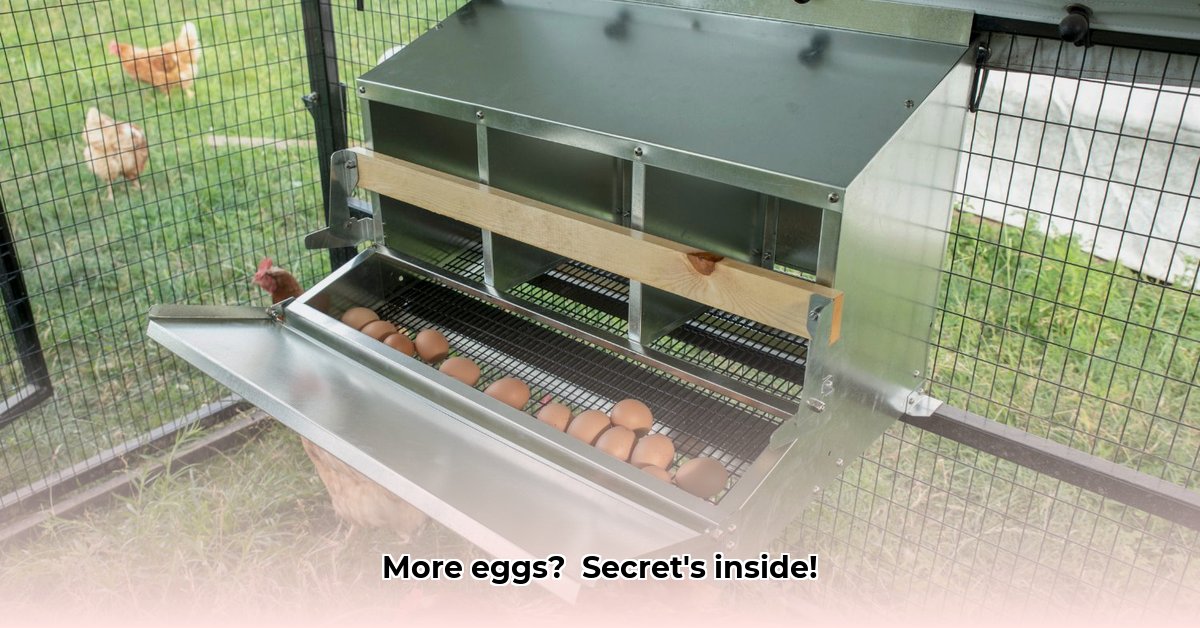
Choosing the Right Tractor Supply Chicken Nesting Box
Before you buy, consider your flock's size. A small flock might only need one nesting box, while a larger group will require more to avoid competition and ensure every hen has a comfortable space. Measure your coop to determine how many boxes you can comfortably fit. Tractor Supply offers various styles and sizes, including wooden (durable but requiring more maintenance) and plastic (easier to clean but potentially less durable) options. Inspect each box carefully before purchasing. Check for sturdiness, ensuring there are no weak spots or gaps that could compromise its longevity or allow pests to enter. Easy egg collection is another key factor; consider boxes with hinged doors for easier access. For more information on Tractor Supply products, check out this helpful resource.
Setting Up Your New Nesting Box: A Step-by-Step Guide
Strategic Placement: Select a quiet, dark corner in your coop, away from drafts and direct sunlight. Hens prefer privacy when laying.
Secure Mounting: Ensure the box is firmly attached to the coop wall using sturdy screws to prevent wobbling, which stresses hens and can lead to broken eggs.
Ideal Height: The nesting box should be easily accessible to your hens. If necessary, add a ramp or adjust its position to ensure comfortable access.
Comfy Bedding: Line the box with soft, clean bedding like straw or pine shavings for a cozy laying environment. Regularly replace bedding to maintain hygiene. Don't use materials that are harmful to chickens.
Boosting Egg Production: Optimizing Your Nesting Environment
Wouldn't it be great to maximize your egg output? Here's how to encourage more eggs and happier hens:
Ample Space: Provide enough nesting boxes to avoid overcrowding (generally, one box per three to four hens, but adjust based on your flock's size and behavior). Competition leads to stress and reduced egg production.
Cleanliness is Key: Regular cleaning prevents disease and parasites. Remove soiled bedding weekly and disinfect the box with a poultry-safe solution. A clean box is more appealing to hens.
Observe Your Flock: Every chicken is unique; pay attention to each hen's preferences. If hens are avoiding the boxes, adjust their placement or number to meet their needs.
Maintaining Your Tractor Supply Nesting Box: A Long-Term Strategy
Regular maintenance extends the lifespan of your nesting box and keeps your hens happy and healthy.
Weekly Cleaning: Remove soiled bedding and disinfect the interior with a poultry-safe disinfectant. Thorough cleaning helps prevent disease.
Monthly Inspection: Check for any damage, loose screws, or other issues. Repair any damage promptly.
Bedding Refresh: Replace the bedding frequently to maintain a clean, dry environment. Regular bedding changes are crucial for hygiene.
Tractor Supply Chicken Nesting Boxes: A Sustainable Choice
Tractor Supply nesting boxes offer a balance of affordability and practicality. They are widely available, making them convenient for many poultry keepers. However, individual models vary in durability and features. Careful selection ensures a long-lasting and effective nesting solution.
While a specific Tractor Supply product needs detailed review for a precise assessment, some factors contribute to its sustainability advantages:
Durability: A durable nesting box reduces waste by extending its lifespan. A well-constructed box can last for several years.
Easy Cleaning: Efficient cleaning prevents the spread of diseases, reducing the need for medication and minimizing waste associated with treatment.
Material Choices: Consider the material's source. Options made from recycled or sustainably harvested materials contribute to environmentally responsible farming.
Reducing Poultry Farm Waste with Better Nesting Box Design
How can we reduce environmental impact in poultry farming? A durable, easily cleanable nesting box plays a significant role. By selecting quality materials and ensuring proper design, we can significantly reduce waste associated with nesting boxes.
Key Considerations for Sustainable Nesting Box Design:
- Material Selection: Prioritize durable, easy-to-clean materials. Plastic or treated wood are excellent choices.
- Proper Sizing: Correct box dimensions ensure hen comfort and minimize broken eggs. Consider the breed of your hens and provide enough space.
- Coop Integration: Placement within the coop should facilitate easy cleaning and egg collection.
- Accessibility: The nesting box should be accessible to both hens and the farmer for easy maintenance and cleaning practices.
Regular maintenance, including prompt cleaning and timely repair or replacement, is crucial to maximize the lifespan and sustainability of your nesting box. This simple practice also directly contributes to reducing potential waste within the broader context of maintaining your hen house and chicken production.